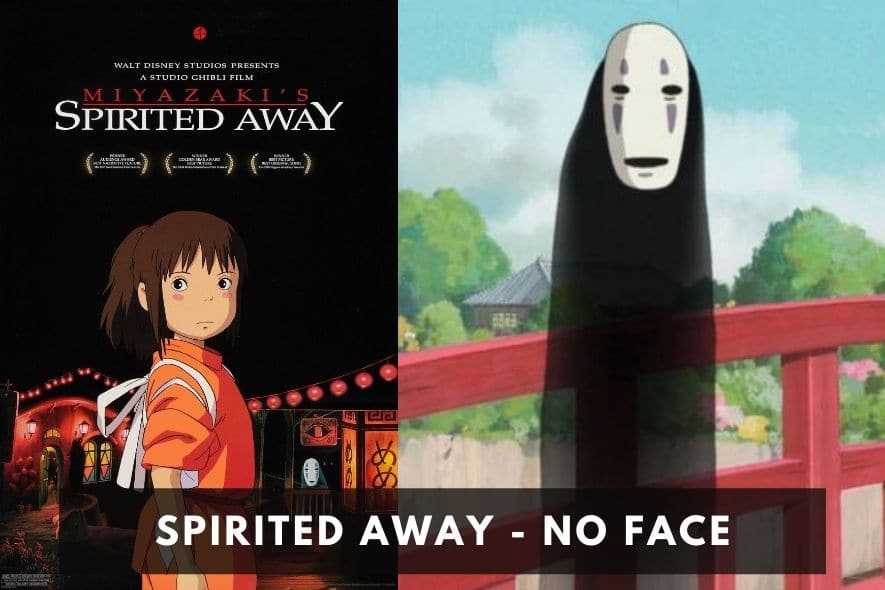Originally posted on April 14, 2022 @ 2:59 pm
Spirited Away is certainly one of Studio Ghibli’s top five films. It’s a terrific coming-of-age blend of fantasy and adventure for kids and tweens, with just enough threat to keep it edgy for kids and tweens without veering into scary Princess Mononoke territory. The spirit No-Face is one of the most intriguing characters in the Miyazaki universe, having been inspired by writer and director Hayao Miyazaki’s friend’s 10-year-old daughters.
No-Face is a transparent spirit that no one else seems to notice when Chihiro Ogino first encounters him in Spirited Away. She welcomes No-Face in after the witch Yubaba nicknamed her Sen and made her a bathhouse worker, and he transforms from a quiet, seemingly bashful character to a glutinous beast. However, there’s a lot more to this creature than meets the eye, and some fans may have overlooked some of the most fascinating details of the “monster.”
1. Voiced By Bob Bergen

No-speaking Face’s voice isn’t well-known, but he does make noises and has lines like other characters. Bob Bergen plays the spirit’s voice in the English version of Spirited Away. Bergen is best known for his Looney Tunes performances, in which he brings characters such as Tweety Bird, Porky Pig, Marvin the Martian, and Speedy Gonzalez to life, but he’s also voiced characters in Fraggle Rock, Star Wars: The Clone Wars, and Robot Chicken, to name a few.
2. Many Fan Theories Are Based On Him
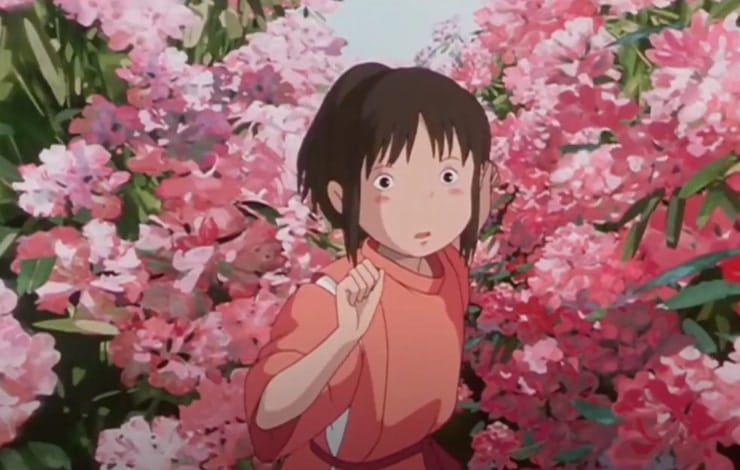
Hayao Miyazaki, the director of the animated film Spirited Away. No-Face is no exception when it comes to fans speculating about their favorite characters and their backstories. No-Face maybe another human stuck in the Spirit World, according to some enthusiasts. Maybe he wasn’t that brave when Yubaba usurped his name and he never got his freedom. People utilize his transparency, as well as Chihiro’s see-through nature when she first enters the Spirit World and the transparency of the passengers on the train, to corroborate the argument.
Several theories, such as N0-Face depicting the horrors of child slavery in Japan, have not been refuted by Miyazaki, and he has even made statements that sound as though the picture was meant to be an allegory for something darker.
3. His Name Is Noppera-bō

An entity, known as the faceless ghost, or Noppera-b, is mentioned in Japanese yōkai, or legends. They frequently take on a humanoid appearance, and while they represent no real threat to people, they enjoy frightening them. They lead their victims into a false sense of security by impersonating someone they know, then frighten them by replacing their faces with blank skin.
Of course, No-Face differs from a regular Noppera-b in that he desires Chihiro’s praise rather than her terror. It’s yet another example of Miyazaki’s ability to turn an urban legend into a kid-friendly but unsettling animated film.
4. He Doesn’t Have Any Actual Form
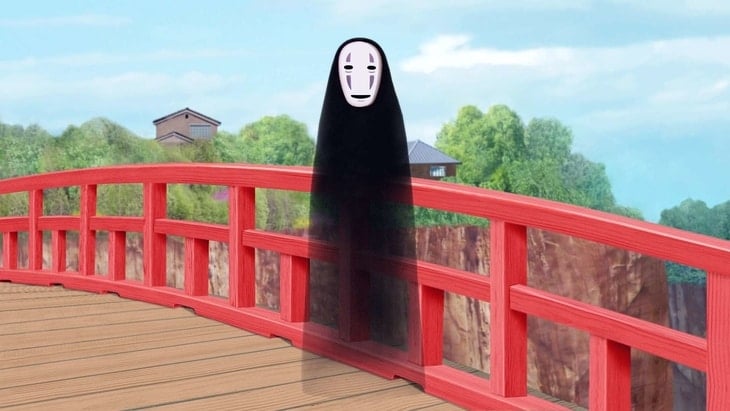
Miyazaki explained in an interview that Japanese spirits do not have a form, thus each spirit, including No-Face, is merely a representation of that deity or spirit in a more substantial form. “Japanese gods have no actual form: They are in the rocks, in pillars, or in the trees. But they need a form to go to the bath house,” he revealed.
This makes a lot of sense, both in terms of Shinto kami, who are not distinct from nature but are part of it, and in terms of what works for a children’s film. Spirited Away needed some incredibly fascinating characters if Miyazaki intended it to be a movie that tweens would like.
5. He Is Not As Angry As He Appears

No-Face appears to be a very greedy jerk while scarfing down anything tasty insight and wanting to eat everything at everyone’s favorite Studio Ghibli bathhouse, paying with dirt transformed into gold. The truth is that he’s a flexible soul who learns from and changes in response to those around him. He begins by displaying a compassionate heart when Sen permits him admission into the bathhouse, assisting her in receiving bath tokens when the foreman refuses to give her any.
No-Face develops a thirst for materialistic things as he explores the bathhouse and learns the customs of the other employees and customers, and the more people he consumes, the more human-like features he appears to take on. Sen “cures” him with the magical emetic dumpling she received from the River Ghost, and he returns to being a kind spirit.
6. He Eats Others And Gets Their Personality Traits In The Process

Those who pay close attention to No-Face will observe that he swiftly adopts the physical qualities of those he swallows, even acquiring frog-like legs that he uses to walk around. After ingesting Aogaeru, the blue kimono-wearing frog, he has a gluttonous mentality. He can also communicate after swallowing Aogaeru, and speaks in the frog’s voice.
No-Face is a lonely spirit who wishes to connect with others, and he feels that by eating and acting like a bathhouse staff, he would be able to attract some attention, particularly from Sen.
7. His Mask Covered A Larger Mouth

No-Face’s mask is a lovely piece of Japanese art with lovely grey and violet colors. His mask also has a little mouth that varies depending on his mood. The monster’s mask mouth, on the other hand, does not belong to him. Instead, it conceals a far more dangerous set of chompers, which come in handy when the ghost tries to devour Yubaba’s bathhouse employees!
Thankfully, the spirit’s teeth, which appear to be made up entirely of molars, don’t smash anything up, leaving our ensemble of swallowed characters not only whole but also able to flee once he’s regurgitated them all.
8. Babette’s Feast Inspired Him

When asked about No-faces in Spirited Away, the author stated that he was influenced by Babette’s Feast. “It’s one of my all-time favorite films. Even in that film, the characters consume a lot of food “According to Miyazaki.
No-Face isn’t the only one who is greedy. Several characters struggle to keep their appetites in check. Chihiro’s parents are turned into pigs as a result of their inability to stop eating spirit food in a restaurant, and Yubaba’s baby B is also greedy. When Yubaba’s sister Zeniba sees him, she describes him as “a bit of a porker.”
9. His Name Is Kaonashi

No-Face is only “No-Face” to those who do not speak Japanese, however, the spirit’s Japanese name is Kaonashi. The phrase simply means “without a face.” Kaonashi is an excellent description of the creature because he not only wears a mask for a face and so has no ownership, but he also absorbs the faces of those he encounters and consumes, adopting new attitudes and ideas based on those he encounters and eats.
No-Face is not only faceless but also nearly body-less. His long, black body is tube-like and nearly hollow as if it might be filled with other people’s ideas and beliefs.
10. He Leaves Footprints
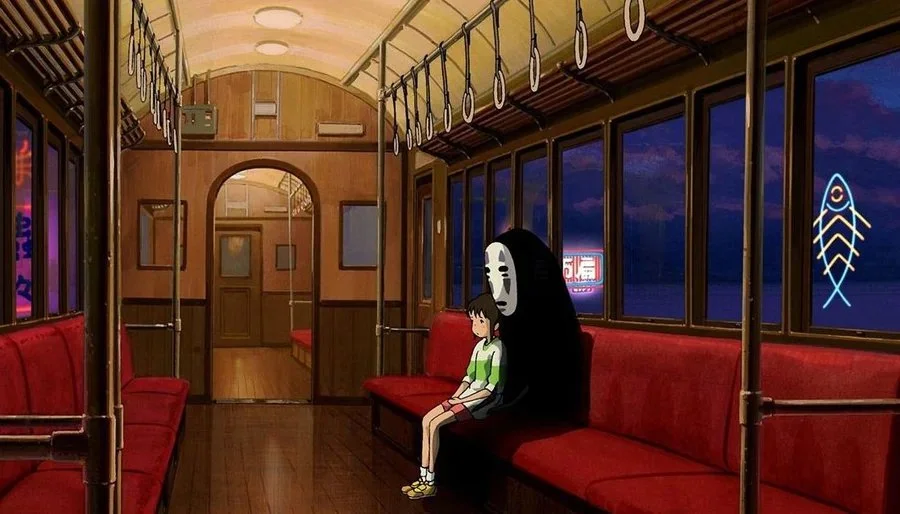
When No-Face walks, he leaves footsteps, which viewers may see if they look attentively. This raises the question of whether the spirit wants to be seen in the first place, and why he might be able to leave concrete evidence of his existence while he’s also so transparent that other spirits aren’t even aware of his presence.
Surprisingly, there are imprints at all, given that the entire film is a mix of Chihiro’s human reality and the enchantment of the spirit realm. They might exist to show that No-Face isn’t a figment of Chihiro’s imagination.
11. No-face Is A Plush Toy (Among Other Things)
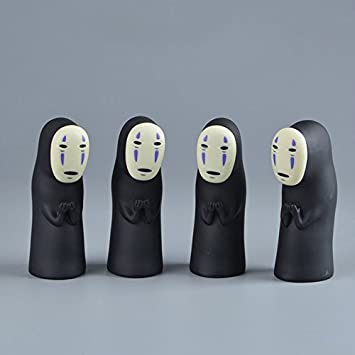
No-Face has become the face, no pun intended, of Ghibli Studios since his debut at the turn of the twenty-first century. As a result, it’s no surprise that the character appears in a variety of products.
Customers can buy the anti-villain as a plush toy, a music box, or a car window sticker, for example. No-emotionless Face’s mask and a set of transparent figures that imitate its non-human look are featured on various articles of clothing.
12. A Star Wars Villain Was Inspired by No-face
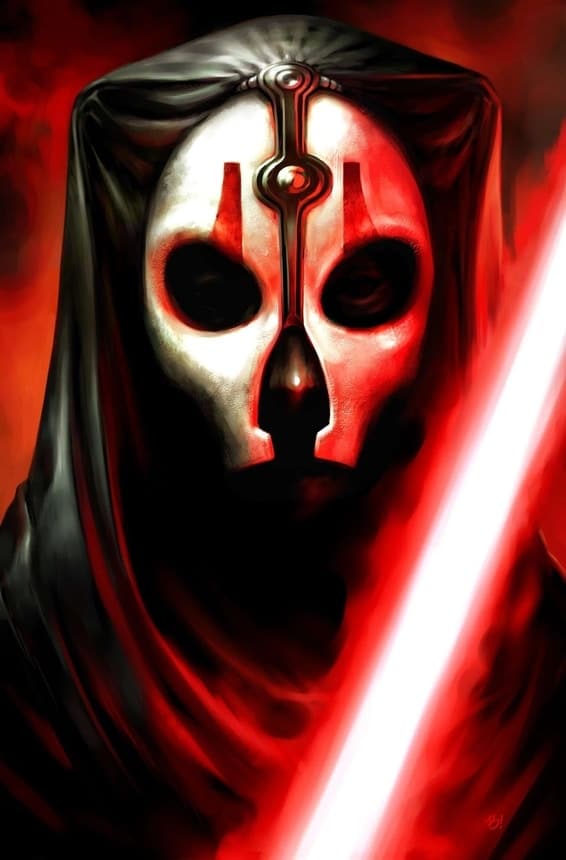
Darth Nihilus is likely recognized by Star Wars fans who aren’t familiar with the films. Especially if they’ve played Knights of the Old Republic II: The Sith Lords. This Dark Lord, on the other hand, was inspired by No-Face.
The likeness is startling. Nihilus is dressed in the same black, featureless attire as No-Face to give the impression that he is a ghost. While the design of his mask has changed, the emptiness remains. The fundamental difference between the two characters is their emotional state. We can’t identify who No-Face is, but we do know how much Nihilus despises him.
13. No-face Is Non-binary

When No-Face is referenced, he is referred to as a “he” since the spirit’s entrance. However, subsequent viewings reveal that the spirit has no gender.
This is reasonable. There are no discernible signs on the white mask-like face to distinguish its gender. It has the same insatiable hunger as a man or woman at a Las Vegas buffet. At the end of the day, No-Face is just a spirit searching for answers.
14. No-Face Is An anti-villain

The film’s second main character is not a hero. No-Face isn’t even a villain. The spirit exists somewhere in the middle. As an anti-villain, consider the apparition with a voracious appetite. Or an anti-hero, as such non-corporeal entities are known.
Consider No-behavior. Face’s The white-masked creature doesn’t just eat evil spirits. It also consumes others, ensuring that it is never alone. In addition, it unusually befriended Chihiro. When No-Face eats a dark spirit, it becomes particularly evil. Consider Rogue of the X-Men gaining the power of Green Goblin.

